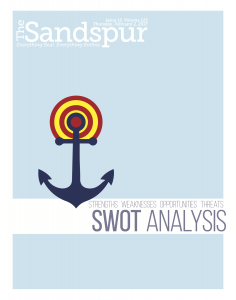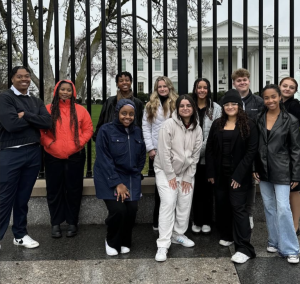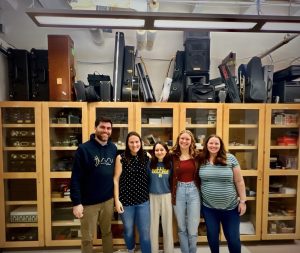
A massive campus-wide initiative, called SWOT (the strengths, weaknesses, opportunities, and threats exercise), has involved Rollins students, faculty, staff, alumni, and trustees in order to analyze the college’s mission and marketability.
In the fall, over 600 individuals from different areas of Rollins completed surveys that asked them to assess the college in the areas of mission and marketability. After the individual surveys, several small groups met, and the Admitted Student Questionnaires (ASQ) were examined.
“The thing that was really nice, which you always hope for as a good qualitative researcher, is the fact that two external consulting firms who were doing independent research at the same time we were conducting the SWOTs, had the same findings,” said Dr. Toni Holbrook, Assistant Provost.
“The other thing that happens when you start having those kinds of conversations, is the whole campus starts to think strategically…We really built some consensus, we educated the community, [and] our results were validated.”
An update was given to the college in October 2016, which presented new data and strategic questions to consider. The ASQ yielded some of the most significant findings—one of the most important factors to accepted students had to do with available majors and their quality. Students who come from other states have a varied interest in other schools across the country, since they are often looking for a liberal arts education. The direct competition for accepted Florida students is from many of the locally state funded institutions, such as UF, UCF, and FSU (see figures). These large research universities offer a very different experience than Rollins.
“It really does have to do with educating prospective students about their choice,” said Dr. Carol Lauer, Assistant to the President for Strategic Planning.
Out of this meeting came the twelve strategic questions for 2016, which covered issues such as undergraduate curriculum, Holt School, new facilities for Crummer and CFAM, diversity, and graduation rates (see page 5). After the October meeting, twelve task forces (one of which later split into two) were formed to investigate these specific issues. Later this semester, town hall meetings will help keep the community informed about the findings of these task forces.
In early January, the Final Report on Internal and External Scans was completed. This document includes charts of the strengths, weakness, opportunities, and threats for both the college’s mission and marketing, and a summation of SWOT’s findings so far.
The college’s mission’s strengths include international focus, community engagement, and small classes. The weaknesses include diversity, career preparation, and driving more decisions with data—most of the opportunities involve building on these weaknesses. Listed threats include competition, cost, online offerings, and political climate.
The college’s marketing strengths include location, the pretty campus, and small class sizes. Marketing and diversity are both listed as weaknesses and opportunities. Cost and competition are both threats.
This report concludes, in part, “No one doubts the advantages of the College’s location, its beautiful campus, and the highly personalized environment its small size allows. Continued and increased focus on internationalization and community engagement are generally agreed upon as well as the need for increased diversity and better career preparation with more access to internships. The reputation of the College is in need of refurbishing with a brand that emphasizes its commitment to the liberal arts and its academic strengths, and that distinguishes it from the large public universities with which it competes.”
The college has done strategic planning in the past—there were efforts during President Bornstein’s administration and the end of President Duncan’s administration. President Grant Cornwell has been hands-on during much of the process, something that Lauer and Holbrook both emphasized.
“Strategic planning is a dimension of leadership. Through this process we are collectively building a deep understanding of ourselves, our strengths and weaknesses, what we have to build on and what needs fixing,” said Cornwell. “All of this research and collaborative analysis informs my sense of what to focus on as president. There is no delegating work so central to my duties.”
In the coming months, The Sandspur will continue to cover SWOT, the task force findings, and the town hall meetings.
Charts (from top to bottom)
Figure 1: Where students admitted to Rollins enroll (Florida residents)
Figure 2: Where students admitted to Rollins enroll (Florida residents, based on net price)
Figure 3: Where students admitted to Rollins enroll (Out-of-state residents)
Figure 4: Where students admitted to Rollins enroll (Out-of-state residents, based on net price)
Charts and “Twelve Questions for strategic development in 2016” taken with permission from the “Planning Update Slide Deck” from October, 2016.









Be First to Comment